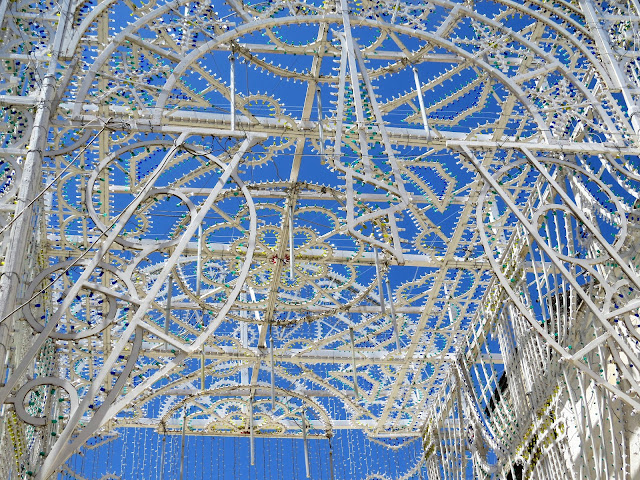Trulli are beehive-shaped (or igloo-shaped, if you prefer) structures traditionally made of local limestone without mortar. They are found nowhere else in the world, just in Puglia, west of the coastal city of Bari. The center of the Trulli District (that seems to be a formal designation) is Alberobello, a UNESCO World Heritage Site that has more than 1,000 of these odd buildings. Alberobello, a long-time destination for international travelers as well as Italian holidaymakers, has good restaurants, hotels and other amenities for visitors, including loads of narrow, trulli-lined lanes.
The first trullo (that's the singular) was probably built in the 1400s or earlier. The often-repeated and unverifiable story is that they were built as a tax dodge. When residents heard that a tax collector was in the area, they could quickly disassemble their trulli and thus have nothing to pay taxes on. When the tax collector left, the trulli could be reassembled almost as quickly.
Alberobello is a great base for exploring nearby towns and the nearby Adriatic Coast. Possible day trips out of Alberobello include Castel del Monte (which we saw as a day trip out of Trani); the inland towns of Ostuni and Ceglie Messapica; and the coastal towns of Polignano a Mare and Monopoli. We visited all four towns during our four nights and three full days in Alberobello.
 |
| Many trulli are used as souvenir shops, though a significant number are still private homes. |
 |
| Alberobello is a popular tourist destination, but it's all concentrated in the area most dense with trulli. Much of the town seems untouched by tourism. |
 |
| Trulli can be quite complex, such as this restaurant with its multi-cone roof. |
 |
| Trulli are visible across the alley behind Palazzo Scotto's garden. |
 |
| East of Ostuni, the Adriatic beckons in the distance. Notice the people on rooftop terraces. |
 |
| Ceglie Messapica is a sleepy hilltop town that centuries ago was the military capital of the region. Today it's known for its restaurants. Unfortunately, we were there in the middle of the afternoon and had trouble finding a place open for a late lunch along its deserted streets. As is common in southern Italy, everything closes in the early afternoon, with shops reopening around 5 and restaurants around 6:30. |
 |
| This earlier version of today's popular Fiat 500 wends its way through the historic center of Ceglie Messapica. |
 |
| A medieval tower looms over a street decked out for a festival in Ceglie Messapica. |
 | ||
| Street decorations such as these in Ceglie Messapica, illuminated at night, are part and parcel of various holiday celebrations in towns across southern Italy.
|
 | ||||||||
| Polignano a Mare's beach is rocky and has no facilities. Even though we had brought swimsuits, without a place to change and without towels, we didn't put a toe in the water.
|














No comments:
Post a Comment